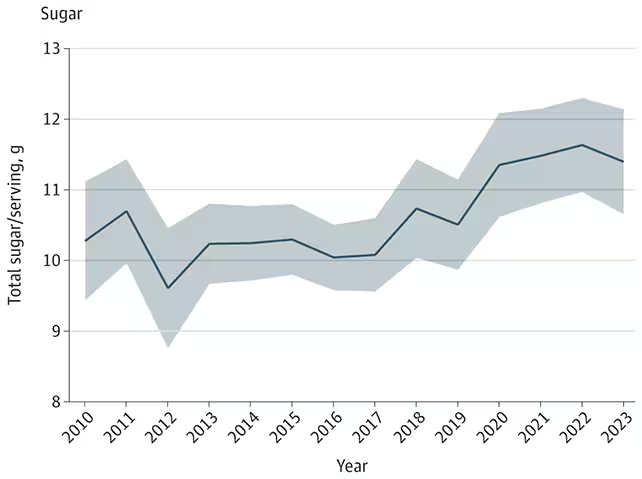3 Minutes
The Breakfast Scene: More Than Just a Morning Ritual
Imagine the classic movie morning: sunlight spills through the kitchen window, a family gathers at the table, and a bright box of cereal becomes the unsung star. But what if, behind the colorful box art and cheerful mascots, lies a plot twist worthy of the biggest Hollywood thrillers? Recent research reveals that breakfast cereals—those quick fixes that fuel kids before school and adults before the daily grind—have been quietly transforming into less nutritional, sugar-packed treats over the past decade.
Plot Summary: The Sweetening of Cereal
A new study with blockbuster impact has uncovered an unsettling truth: cereals, especially those aimed at children, are not the wholesome heroes their packaging suggests. Researchers analyzed 1,200 ready-to-eat cereal varieties, rolled out in the United States between 2010 and 2023. Their findings read almost like the script for a dystopian sci-fi series: average levels of sugar, fat, and sodium have all increased, while nutritional elements like protein and fiber have taken a back seat.
The sugar content, for instance, jumped by nearly 11%—from 10.28 grams per serving in 2010 to 11.40 grams in 2023. Fat content saw an even steeper climb, up by around 34%, and daily sodium intake from these cereals soared by more than 30%. If this were a cinematic villain, it would be hiding in plain sight at your breakfast table.

Main Cast: Kids as Protagonists
As in so many coming-of-age films and TV series, children are at the center of this unfolding drama. Cereal is the breakfast of choice for most young Americans, preferred over more elaborate options like pancakes or waffles. But with over 45% of a child’s recommended daily sugar limit coming from a single serving of some cereals, the stakes are higher than ever. The disconnect between eye-catching 'healthy' claims on the boxes and the true nutritional content inside makes it harder for parents to select the right role for breakfast on the family menu.
Production Details: How the Research Was Filmed
This isn’t a story of old cereals staying the same. The research teams—including scientists from respected US institutions—closely tracked only new or relaunched cereals marketed to children aged 5 to 12. Each “character” in this epic (all 1,200 cereals) was analyzed for nutrient content using extensive food databases. The clear-cut direction revealed a trend toward prioritizing sweet, salty flavors at the expense of long-term health.

Critical Reception: Health Experts Weigh In
The critical consensus is in: experts warn that these trends could give rise to a generation facing higher risks of childhood obesity and cardiovascular disease. With one in five US children now affected by obesity, the audience for this real-life saga keeps growing. Current regulations in the US only require minimal health standards—not strict rules about sugar and fat. So, while boxes get a marketing makeover, the inside story remains much the same, if not worse.
Personal Review: The Real-Life Cliffhanger
Every great series leaves us eager for the next season—a chance for change or redemption. The story of breakfast cereal calls for a new narrative: one where brands put genuine nutrition ahead of flavor tricks and flashy mascots. Like the best plot twists in acclaimed TV dramas, this research compels both families and policymakers to rethink what’s truly being served for breakfast. For fans of films and series who know the difference good storytelling can make, it's a reminder that real-life food choices should be just as critically examined as what’s on our screens.
Source: doi



Comments